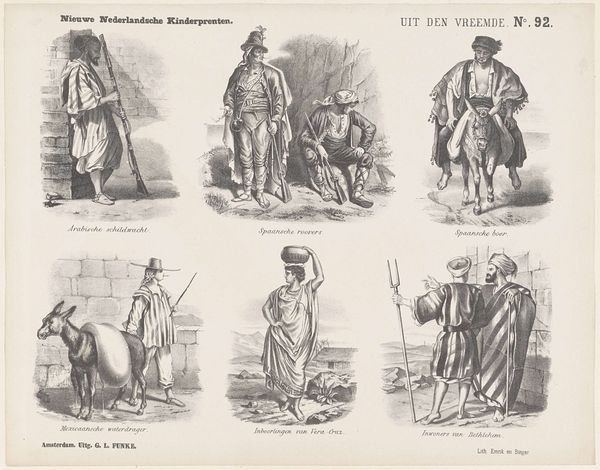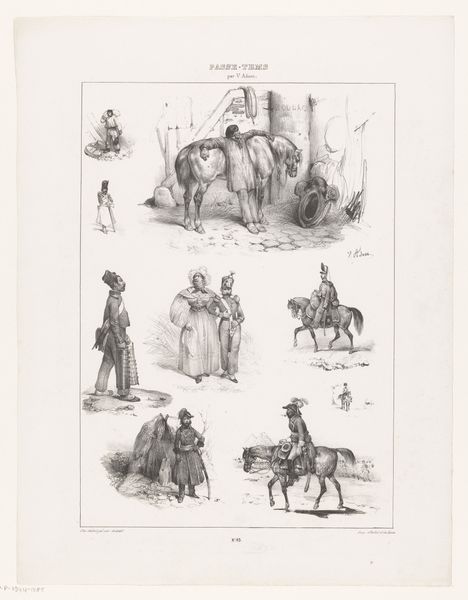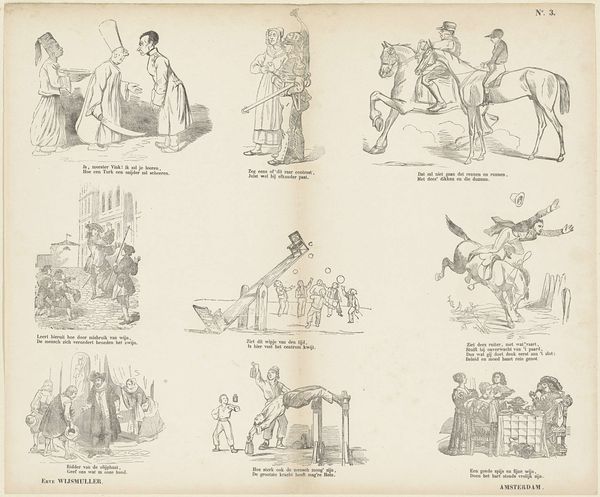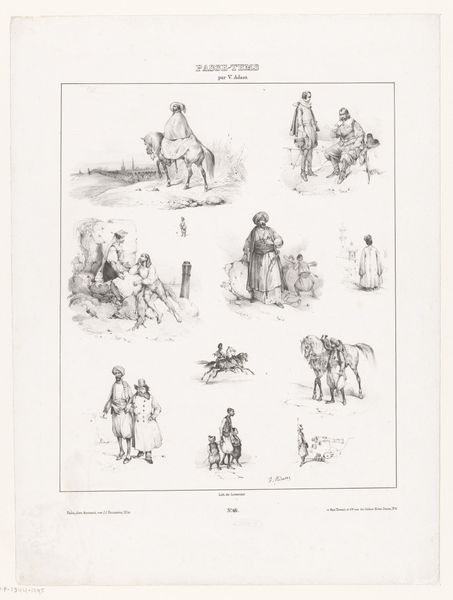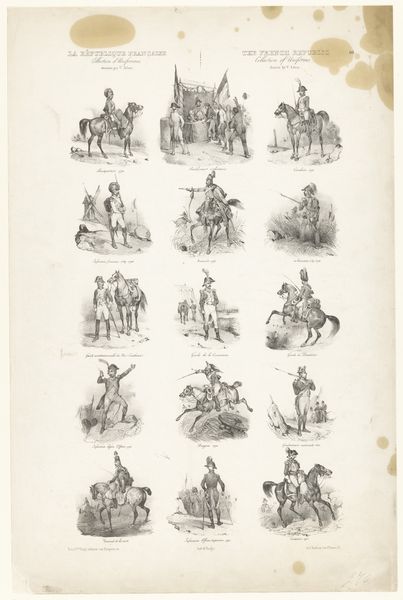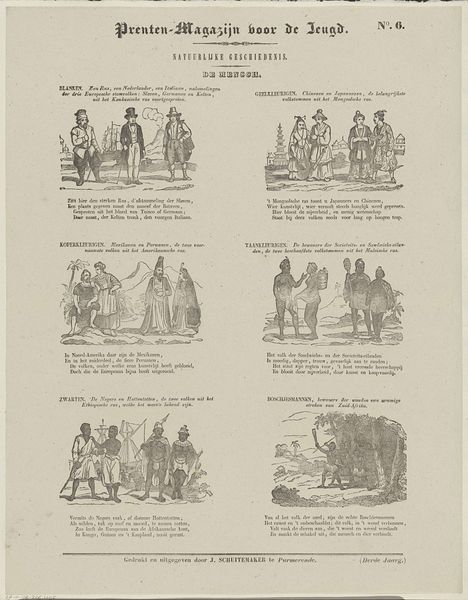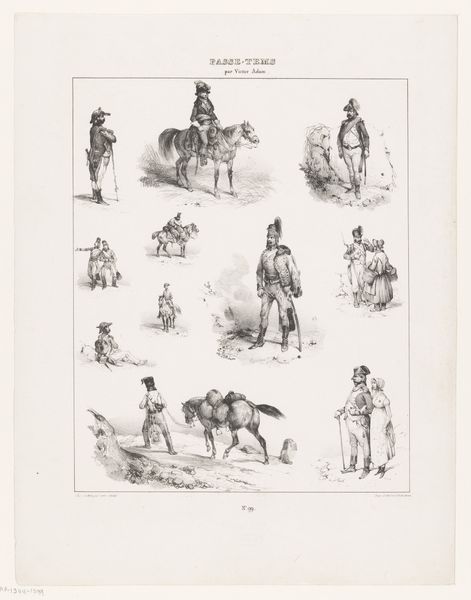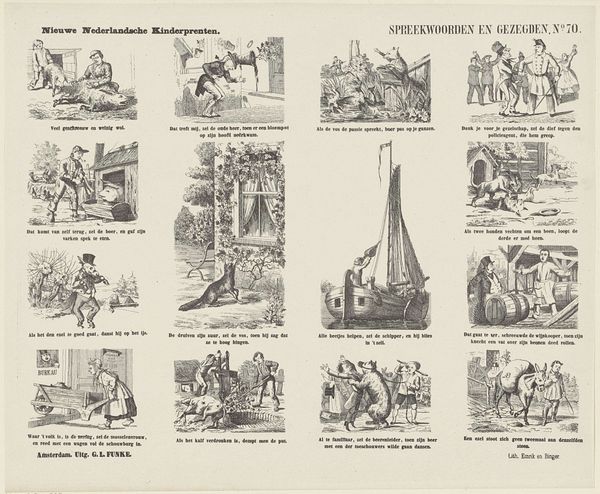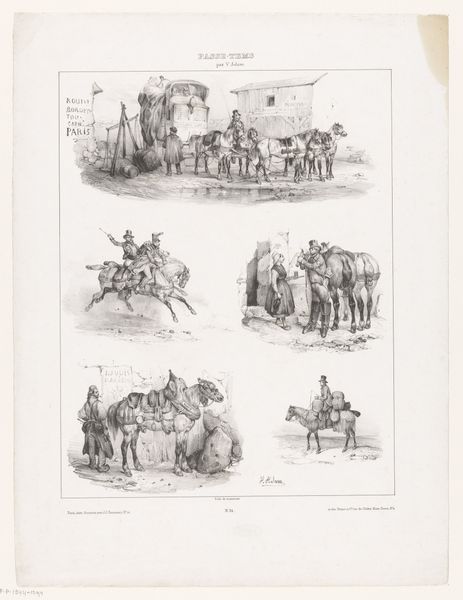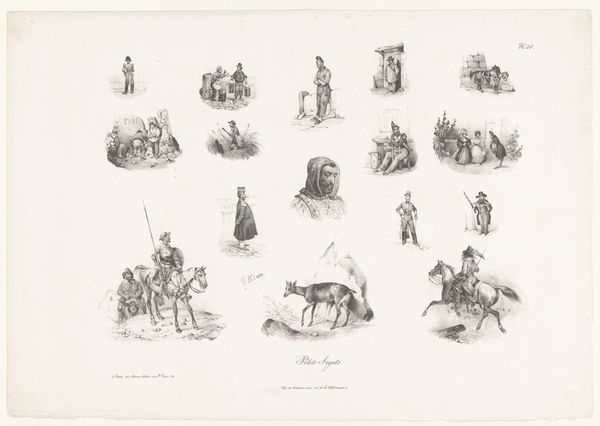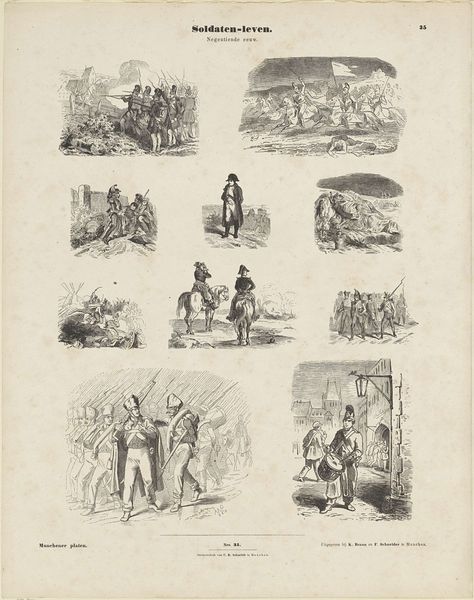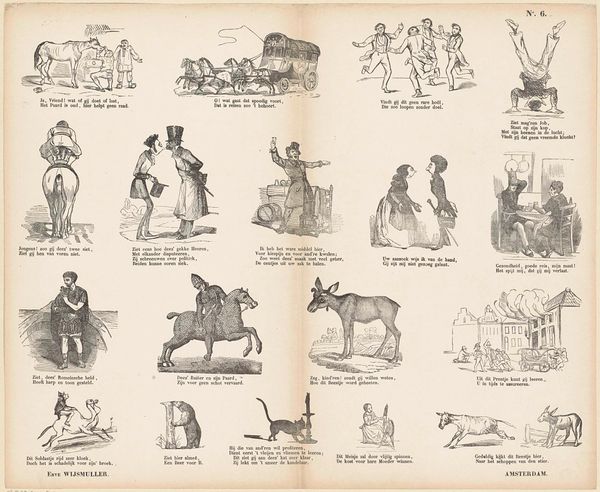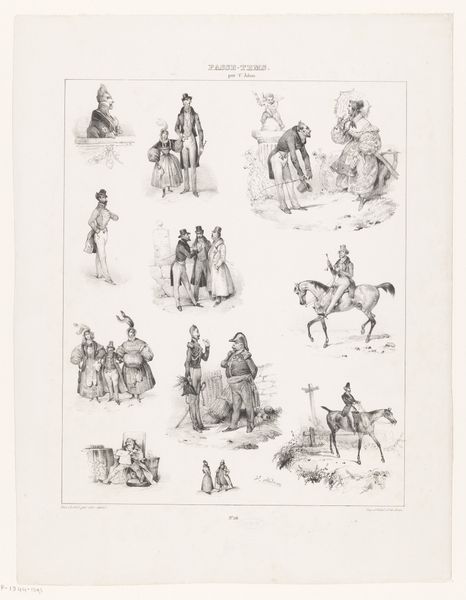
drawing, lithograph, print
#
portrait
#
drawing
#
narrative-art
#
lithograph
# print
#
islamic-art
#
genre-painting
Dimensions: height 341 mm, width 429 mm
Copyright: Rijks Museum: Open Domain
Curator: This print, created between 1865 and 1875, is entitled "De Turken in hunne huishouding" by George Lodewijk Funke, an intriguing lithograph showcasing various aspects of Turkish life. Editor: The composition's captivating, it is reminiscent of a sampler or a study sheet, offering fragmented glimpses into another world— a window into Ottoman life as perceived through a Western lens. The monochromatic medium renders a sense of austerity to otherwise embellished forms and details. Curator: Absolutely. What interests me here are the labor practices behind printmaking and how such accessible formats shape public opinion. Here we see varied illustrations of different figures and classes, seemingly compiled to offer viewers a comprehensive understanding of Turkish culture. Note also how mass-produced lithographs could distribute ideas about foreign cultures in ways never previously imagined. Editor: And the titles of each of the little portraits and vignettes – "The Sultan's Favorite," "A Tunisian," "The Grand Lord of the Sultan"– feel almost like collected specimen in an anthropologist’s notebook; removed and carefully re-presented for outside scrutiny. It's like flipping through an old photo album that whispers secrets. Curator: Exactly, there is also some ambiguity embedded within the text. It appears this image was purposed as a Dutch "Kinderprenten," a children's print which highlights its integration into the culture. Editor: That gives me pause— these "children’s prints" are infused with so much assumed Western superiority of the East. But somehow, even with my critical reservations, I'm still drawn to these images; especially by the delicate craftsmanship used to depict detailed elements of a distant world. The charm in the old-fashioned presentation seduces me every time. Curator: Yes, the format itself reveals much about 19th-century European perspectives on other cultures, revealing the material and cultural networks in which it circulated. Editor: The dialogue is not really just about those Turks and "their household" on that distant faraway land as the title suggests, is it? But it is also about how we viewed them— and thus viewed ourselves in relation to them. Interesting stuff.
Comments
No comments
Be the first to comment and join the conversation on the ultimate creative platform.
